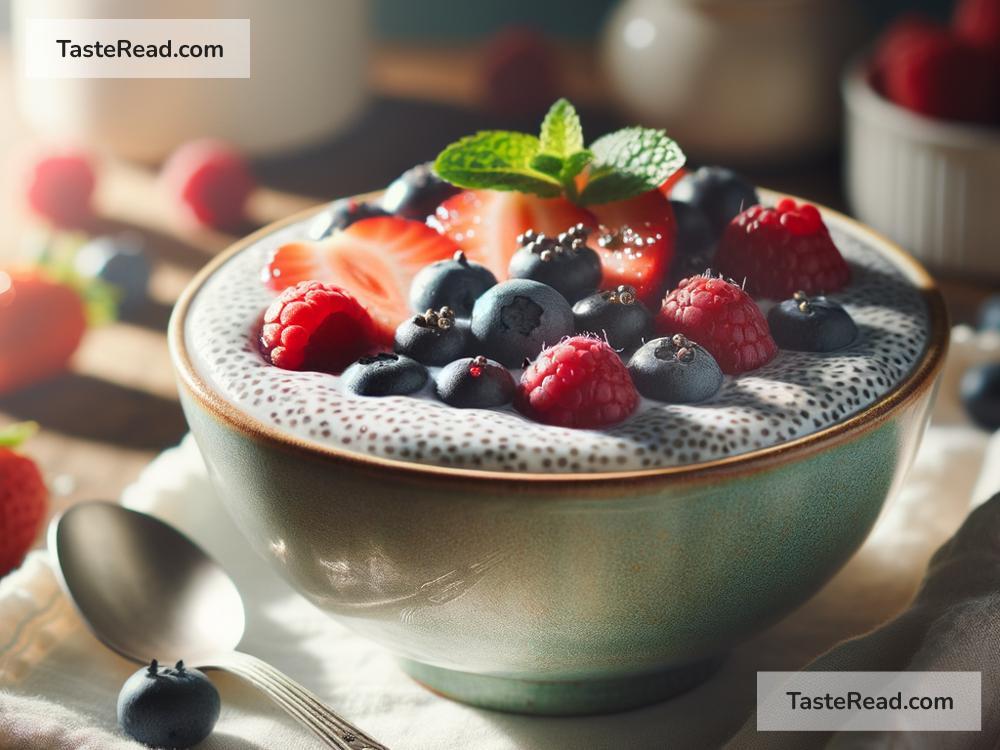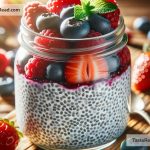In the whirlwind world of food trends, where dishes come and go faster than the seasons change, one humble recipe has managed to stick around and even grow in popularity: chia seed pudding. This simple yet versatile dish has taken social media by storm and found a permanent spot in the breakfast menus of health enthusiasts and foodies alike. But how did this unassuming seed pudding become an overnight sensation?
Chia seeds, tiny black seeds from the Salvia Hispanica plant native to Mexico and Guatemala, have a long history. They were a staple in the diets of ancient civilizations like the Aztecs and Mayans, valued for their ability to provide sustained energy. Fast forward a few centuries, and these seeds have entered the 21st-century kitchen, transforming into a go-to breakfast favorite for many.
The viral ascent of chia seed pudding can be attributed to a perfect storm of factors, starting with its incredible health benefits. Chia seeds are little powerhouses packed with omega-3 fatty acids, rich in antioxidants, and full of fiber, protein, and calcium. Incorporating them into a daily diet seemed like a no-brainer to health-conscious individuals seeking nutrient-dense foods that are also convenient.
Then, there’s the ease of preparation. Chia seed pudding requires minimal effort — mix chia seeds with your choice of milk (dairy or plant-based), let it sit in the refrigerator overnight, and voila, you have a creamy, satisfying pudding by morning. This simplicity is a big part of its appeal. In today’s fast-paced world, spending less time preparing meals is a blessing, making chia seed pudding the perfect overnight breakfast for busy mornings.
The adaptability of chia seed pudding also plays a significant role in its popularity. It’s a culinary chameleon that can easily be customized to fit any palate. Want something sweet? Add honey, maple syrup, or vanilla. Craving texture? Toss in fruits, nuts, or granola. You can even give it an exotic twist with coconut milk and tropical fruits. The possibilities are endless, and this versatility has led to a plethora of creative and delicious variations popping up all over social media.
Speaking of social media, it has been instrumental in catapulting chia seed pudding to viral status. Instagram, with its visually-driven platform, became a showcase for the aesthetically pleasing dish. Bright, colorful toppings on a smooth, creamy base make for a perfect photo-op. Influencers and food bloggers began sharing their takes on the pudding, each version more enticing than the last. These appealing visuals, coupled with the promise of health benefits and convenience, created a recipe for virality.
Health and wellness trends have also contributed to the pudding’s popularity. As more people look for ways to eat cleaner and incorporate more plant-based options into their diets, chia seed pudding stands out as a prime example of how nutritious and delicious can go hand-in-hand. Its gluten-free and vegan-friendly nature makes it accessible to a wide audience, further broadening its appeal.
Another intriguing aspect of chia seed pudding’s rise is the rediscovery and celebration of ancient foods. There’s been a growing appreciation for ingredients that have stood the test of time, both for their nutritional value and their cultural significance. In rediscovering chia seeds, we’ve tapped into ancient wisdom that recognized the value of these seeds long before modern science could back it up.
The growth in popularity of chia seed pudding reflects broader shifts in our societal values towards health, convenience, and sustainability. It champions the idea that eating well doesn’t have to be complicated, expensive, or time-consuming. Instead, it can be as simple as letting some seeds soak overnight.
In conclusion, chia seed pudding’s rise to breakfast fame is more than just a fleeting food trend. It’s a testament to our evolving relationship with food – one that prioritizes health without sacrificing flavor or convenience. As long as these values remain important, it’s likely that chia seed pudding will continue to be a beloved choice, not just for breakfast, but as a symbol of a more mindful and nourishing approach to eating.


